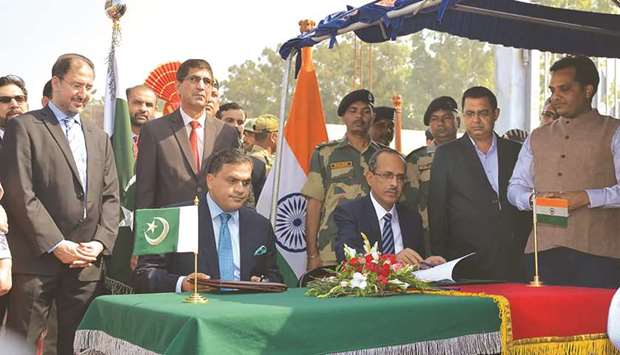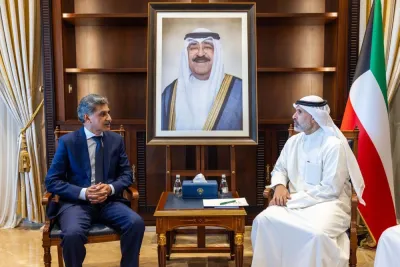Pakistan and India have signed an agreement that would open a corridor to allow Sikh pilgrims to visit one of their holiest shrines, despite a flare-up in tensions over Kashmir.
The project, hailed as a peace corridor, has survived a deterioration in relations between the nuclear-armed neighbours since India revoked the special constitutional status of its part of Kashmir.
The corridor is meant to allow Sikh pilgrims from India to visit Kartarpur Sahib in the eastern Pakistani province of Punjab.
“Today we have signed the agreement on Kartarpur with India,” Pakistan Foreign Office spokesman Mohamed Faisal said yesterday.
Under the agreement, up to 5,000 pilgrims can visit seven days a week.
“Indian pilgrims of all faiths and persons of Indian origin ... can use the corridor. The travel will be visa-free,” said SCL Das, a joint secretary in the Indian ministry of home affairs, at a press conference after the agreement was signed.
“Pilgrims from around the world are also welcome,” Faisal added.
“Today is a day of celebration,” he said at the signing ceremony in Kartarpur. “It was very, very difficult and tough negotiations with India, because of the history we have, it is never easy, it is never simple.”
The pilgrims can stay from dawn to dusk after paying a service charge.
Delhi said that it is still contesting Pakistan’s bid to charge each pilgrim $20 per visit.
Faisal said the $20 was a service charge, not a fee, and pilgrims would just have to present their passports, which would be quickly scanned, to cross in.
The first group of pilgrims from India will arrive on November 9, the day Prime Minister Imran Khan is scheduled to formally inaugurate the corridor.
The deal allows for a secure corridor and bridge between the two countries, leading directly to the grave of Sikhism’s founder Guru Nanak, just 4km (two miles) from the Indian border.
Pakistan had employed hundreds of labourers to spruce up the shrine, including building a border immigration checkpoint and a bridge, as well as expanding the grounds comprising the shrine itself.
The crossing and corridor – including a road, bridge over the Ravi River and immigration office – will replace a drawn-out visa process and circuitous journey through Pakistan.
India had long been asking Pakistan for such a corridor, but the project’s realisation was prevented by years of diplomatic tensions between the two countries that have fought three wars since the partition of the subcontinent in 1947.
Guru Nanak, the founder of the Sikh religion, spent the last 18 years of his life and died at Kartarpur Sahib, which is now in Pakistan.
The followers of the Sikh faith live in both countries and often face difficulties visiting their shrines due to tensions between Pakistan and India.
The pair have maintained an uneasy calm since tit-for-tat cross-border air raids across their disputed Kashmir frontier in February sparked fears of wider war, with each side claiming to have shot down a fighter jet from the other side.
Pakistani and Indian soldiers have also continued to fire over the Line of Control (LoC) – the de facto border dividing the Himalayan territory, killing civilians on both sides in recent days.
Kashmir has been divided between India and Pakistan since the end of British colonial rule in 1947.
Both claim the Himalayan territory in full and have fought two wars over it.

This handout picture released by the ministry of foreign affairs yesterday shows ministry spokesman Mohamed Faisal (centre-left) and Indian home ministry joint secretary SCL Das (centre-right) during an agreement signing ceremony on the visa-free India-Pakistan Kartarpur Corridor, in the town of Kartarpur, near the border.


